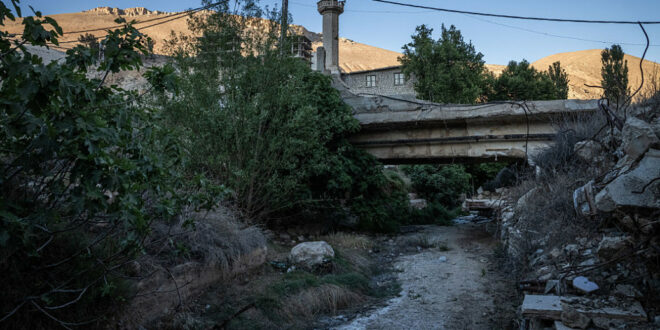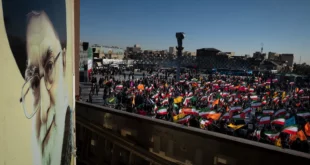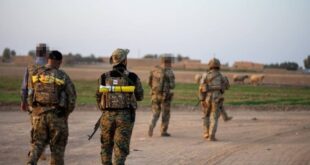For the first time in half a century, Damascus and its surrounding countryside are experiencing an unprecedented water shortage that has forced authorities to implement the most severe water rationing program since the 1950s, according to local experts. Residents now receive water just once every three days instead of every two days, marking a dramatic shift in daily life across Syria’s capital.
The crisis has transformed the urban landscape of central Damascus neighbourhoods like Sha’lan, Malki, and Baramkeh, where water trucks have become as common a sight as in the city’s outer suburbs. Private water tankers charging between $35-70 per 1,000-litre delivery have become the primary water source for millions.
In nearby rural areas including Qudsia, Jabal al-Ward, and al-Arein, residents endure water cuts lasting more than 90 consecutive hours, forcing families to choose between thirst and financial hardship.
Water control disputes
The Israeli military expansion into southern Syria following Bashar Al Assad’s regime collapse in December last year has significant implications for water security, according to water experts, creating both immediate humanitarian challenges and broader strategic concerns about resource control in the Middle East
The impacts vary considerably by geography and water system, with some areas facing direct restrictions while others remain largely unaffected by the military advances.
Water resources expert Dr Muwaffaq Juma’a emphasises that the current crisis was compounded by internal factors.
“In addition to regional factors, the water crisis is Syria and Damascus is compounded by climate and structural reasons,” he said, while also warning that “Israeli policies reveal their intentions for water expansion.”
Israeli forces have reportedly seized control of critical water infrastructure in Quneitra province, including at least one major dam that directly impacts villages like Kawaya and Maariya, according to local reports.
This seizure of local dam infrastructure serves dual strategic purposes: providing leverage over agricultural irrigation systems that rural communities depend on for their livelihoods, and establishing control over domestic water supplies for affected populations.
The Yarmouk River, a major tributary of the Jordan River that flows along the Syria-Jordan border through Dara’a province, represents another critical water resource now potentially under Israeli influence. This river system has historically provided essential irrigation water for southern Syrian agriculture, and Israeli control of upstream positions could affect water flow to both Syrian and Jordanian territories.
The Syrian government warned that Israeli control over water resources in the south and diversion of some rivers poses a threat to water and food security.
Syria’s UN representative indicated that the Israeli occupation seeks to dominate the Yarmouk basin, shared with Jordan.
Crisis compounded in Damascus
The General Water Authority described the situation as “an unprecedented crisis in Damascus’s history.”
Director General Ahmad Darwish attributes one of the major causes to a catastrophic drop in rainfall and snowfall, with precipitation over the Fijah spring reaching only 33% of normal levels, and just 24% over the Damascus basin.
This translates to a devastating reduction in water flow from the Fijah spring, the capital’s primary water source, which has dropped from 10 cubic meters per second at the beginning of summer to less than two cubic meters per second by August.
Dr Muwaffaq al-Sheikh Ali, a natural resources management consultant, explains that the Fijah spring’s weakness stems primarily from reduced snow accumulation in the mountains, which affects flow rates more significantly than direct rainfall. Damascus’s water system relies mainly on Fijah, with partial support from the Barada and Haroush springs, plus a network of wells on the periphery.
This distribution system, adequate for decades, has collapsed under the pressure of three simultaneous factors: climate decline, infrastructure damage during years of war, and increased demand from waves of displacement to the capital.
The water crisis is no longer just an infrastructure issue but a suffocating financial burden.
The cost of securing water from private tankers adds enormous burdens on families, reaching hundreds of dollars monthly in a country where most residents live below the poverty line.
Abu Mamoun, a father of five, describes his daily struggle: “Filling a 1,000-litre tank costs $35-50. How can I pay this amount every two or three days? We need nearly $350 monthly just for water.” He adds that illegal pumps, known locally as “thieves,” worsen the situation by drawing large quantities from the network at the expense of other residents.
Beyond economic burdens, social consequences expand with unfamiliar scenes: neighbours sharing water jugs, queues in front of tankers in Damascus’s upscale neighbourhoods, and major companies planning daily budgets to secure their water needs. In rural areas, the equation is harsher where outages exceed three consecutive days.
Water experts warn that continuing the crisis without radical solutions will deepen the gap between supply and demand, threatening the capital’s water security. They consider “consumption rationalisation and waste reduction a priority over massive projects that may not see the light soon.”
Abu Raed, a 60-year-old resident of rural Damascus, notes that those without private pumps face doubled hardships, especially in elevated areas where water barely reaches during limited hours and with weak pressure. However, he observes that “people help each other, neighbours fill water jugs for neighbours” in desperate attempts to ease the crisis.
A thirsty capital
The current crisis cannot be separated from the legacy of prolonged conflict that weakened Damascus’s water and sewage networks. Many pumping stations were destroyed or disabled during recent years, while old networks received no regular maintenance, raising water loss rates to approximately 40% before reaching consumers.
Dr Muwaffaq Juma’a notes that Damascus and its countryside require about 450,000 cubic meters daily to meet demand, while recording a summer deficit of around 100,000 cubic meters. This shortage doubles due to power outages that disrupt pump operations and periodically disable supply lines.
Faced with this reality, the parallel water market has become an expensive refuge, with residents purchasing water from private tankers at prices ranging from $35-70 per 1,000 litres. With continued outages, these tankers are no longer merely an “additional option” but have become the primary water source in the capital.
Water experts believe the most urgent and realistic measures involve maintaining the deteriorated network and reducing losses that consume 40% of produced water, alongside campaigns to rationalise domestic and agricultural consumption.
 Eurasia Press & News
Eurasia Press & News




